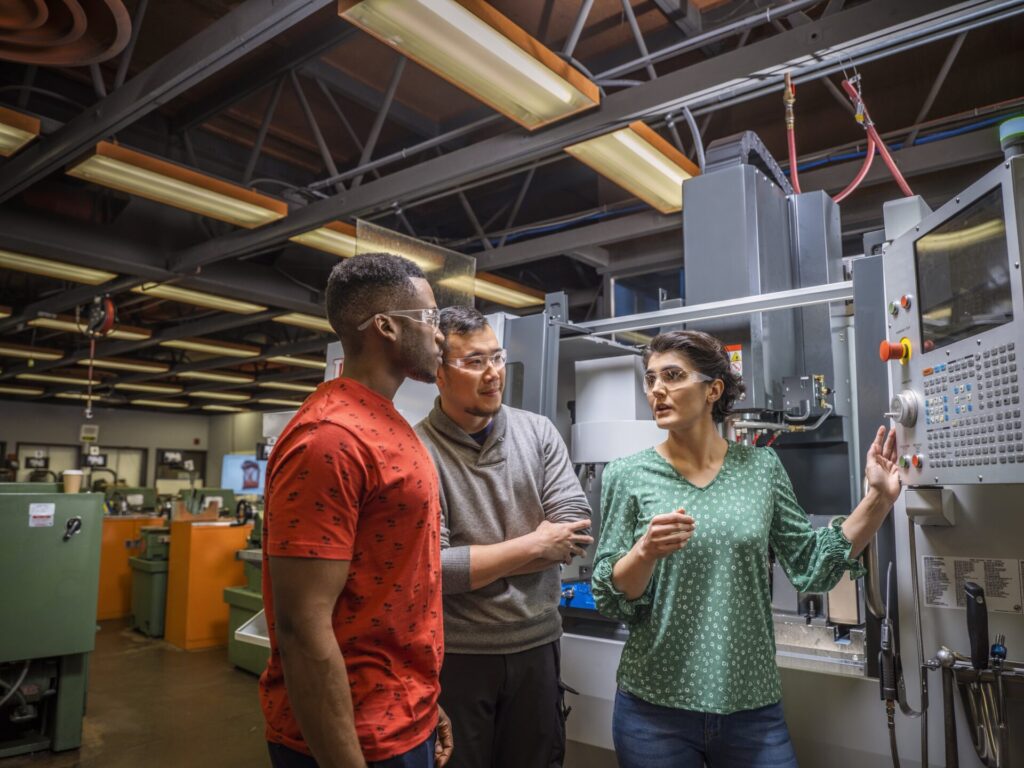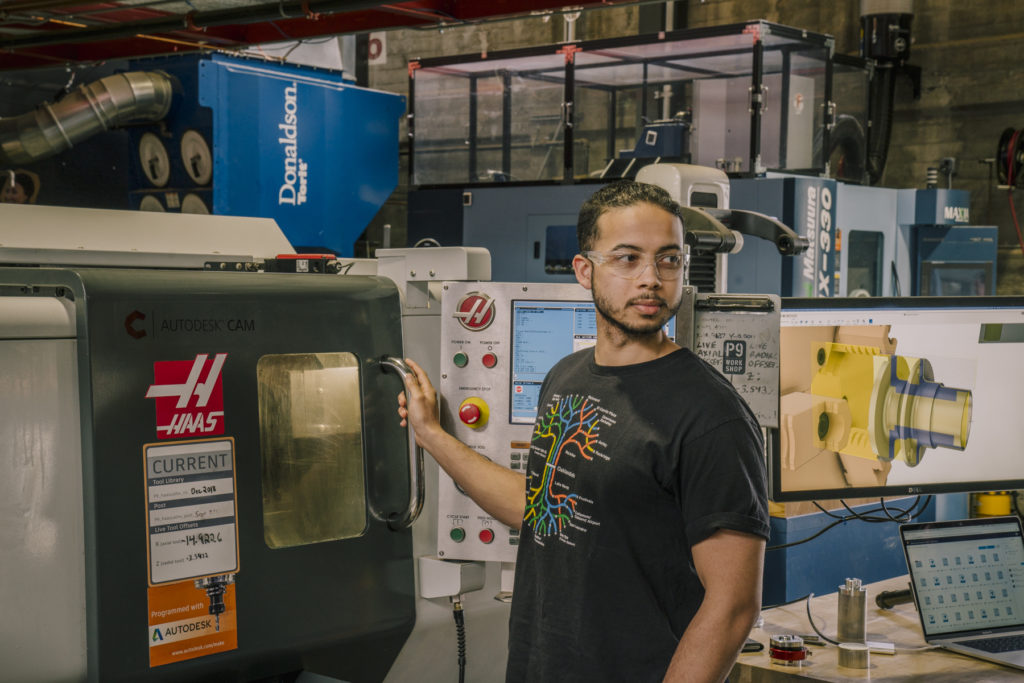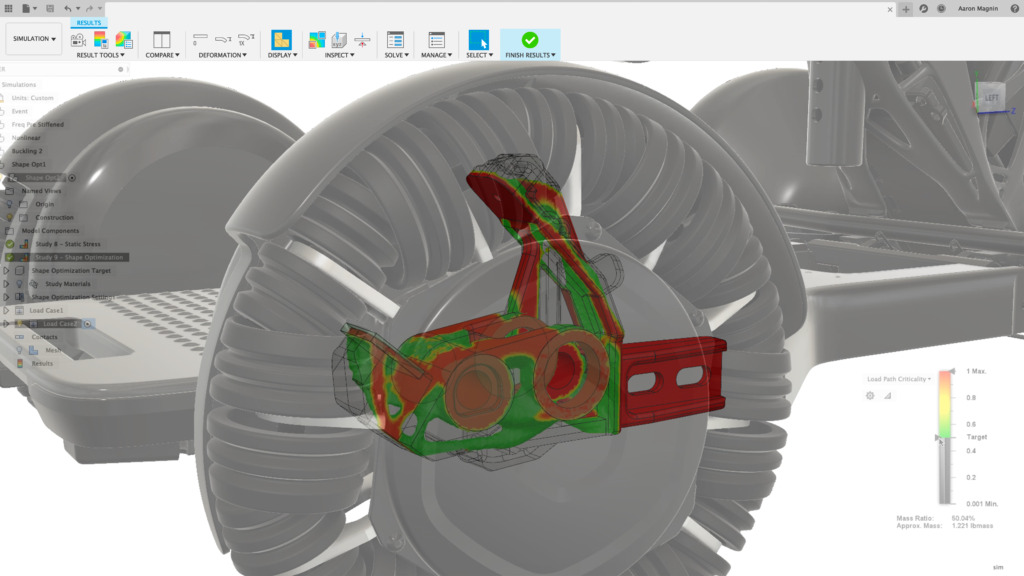& Construction

Integrated BIM tools, including Revit, AutoCAD, and Civil 3D
& Manufacturing

Professional CAD/CAM tools built on Inventor and AutoCAD
4 min read
This post is also available in: Français (French) Italiano (Italian) Deutsch (German) 日本語 (Japanese)
Fusion 360 is the sum of its multiple, powerful parts. We’ll expand upon CAD, CAM, and CAE, advantages across crucial touchpoints in the end to end product development process.

Modern product development is largely made possible with the help of computer-aided design (also known as CAD) because, simply put, we have a litany of computerized systems at our disposal. These hardware configurations are appropriately optimized for sophisticated design and modeling, simplifying processes for the modern designer.
According to Statista, 2018, global CAD market revenue was roughly $7.47 billion. Of that, 74%, or $5.5 billion, stemmed from 3D design. Experts expect that figure to swell to $8.39 billion over the next four years. Companies must provide ample software options — of the utmost quality — to support this sustained growth, thus streamlining end-to-end product development.
Older design methods necessitated the production of multiple, iterative prototypes; this practice was inherently wasteful. Cutting-edge CAD allows design teams to experiment, unencumbered by creative limitations. On the fence about a design change or awaiting approval? Teams can archive successive design variations, allowing designers to roll back (or forward) as needed. Fusion 360, in particular, promotes the effortless creation of 2D drawings, straight from 3D models and schematics.
Virtualization is a productivity advantage, and redundancy adds protective layers to projects. Your best ideas no longer have to be fleeting — they can be safely cataloged. With consolidated software platforms like Fusion 360, referencing existing materials is an easy task.
Years ago, designers and engineers had to do drawings and drafting by hand. CAD software allows for much easier changing during the product development process allowing you to easily overhaul a 3D model or make small changes. It’s also easier to improve the quality and look of products while communicating your ideas to team members and stakeholders. Ultimately companies save time and reduce waste and production costs while reducing the time to market.

Manufacturing and product design commonly go hand in hand. While design focuses on bringing concepts to life, CAM focuses on assessing their scaled viability. It is relatively easy to design a small batch of vehicle chassis to demanding specifications. However, larger companies must determine if that same design can be replicated successfully on 300,000 models. This mass production must adhere to time-and-materials constraints.
This is why mass-market companies cannot build every car from carbon fiber, or fashion every metallic component from titanium. The result is simply too expensive or unrealistic, given the availability of resources. Superfluous designs are also more prone to defects. Pairing CAD with CAM allows companies to meet timeline demands while maintaining excellent quality control. Customers, companies, and profits all stand to benefit.
Generative design in Fusion 360 arises from this marriage of approaches. Once constraints are clear, it becomes much easier to form appropriate designs. Perhaps a core component is much more reliable when made from steel as opposed to aluminum. If that specific grade of steel is unavailable, it may be time to consult the drawing board again. Sound design is thus realistic, not whimsical. The sky’s the limit with good CAD software, however.
We’ve discussed how a product moves through the design phase, using manufacturing considerations as a guide. The engineering process is the third pillar of successful end-to-end product development. It is key to preserving safety, longevity, usability, and cost savings.
Say your company has designed a brake caliper. You have nailed down a viable design and can reliably produce it in large quantities, at a sensible price point. What comes next? Engineering teams step in to perform rigorous testing. This is especially important for components under dynamic load. The difference between a rolling stop and locking up at high speeds is immense. Promising components can rapidly degrade under pressure, thermal stress, or torsional stress. Such extreme use cases can expose design flaws, which is why engineers must uncover glaring (and inconspicuous) issues before a product enters production — and certainly before it reaches the public.

Fusion 360 offers feature-rich simulation software, which lets engineering teams experiment with different parameters, observing how a component behaves under varied conditions. This testing can cover extremes and typical uses. Making necessary design enhancements becomes black and white without guesswork. Users can access stress mapping, temperature mapping, and more to assess design integrity, employing standardized and customized tests to push the envelope.

Teams must be forward-thinking when selecting product-development software because many solutions are fragmented, which is why it is essential to push the industry toward comprehensive solutions that inspire impressive products. A significant part of that push is collaboration. Fortunately, Fusion 360 is a cloud solution that streamlines data sharing across devices and borders.
CAD, CAM, and CAE have their own distinct importance, yet are interdependent during product development. Seamless integration facilitates peak efficiency during production. That boost can help you surge past your competition while encouraging better teamwork.
Do you want to start designing your future with Fusion 360? Try it today with a 30-day free trial:

By clicking subscribe, I agree to receive the Fusion newsletter and acknowledge the Autodesk Privacy Statement.
Success!